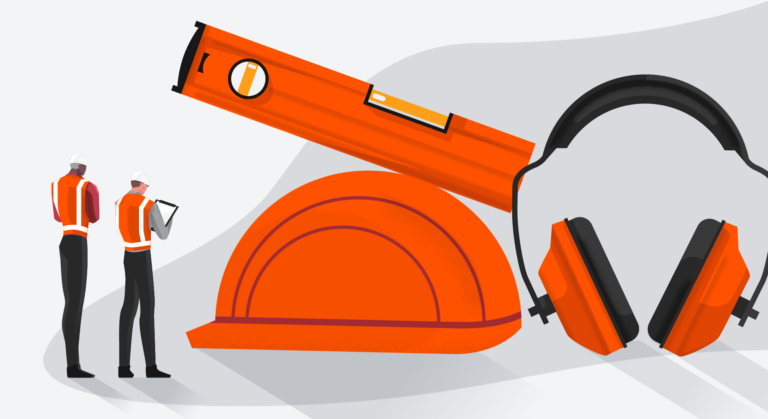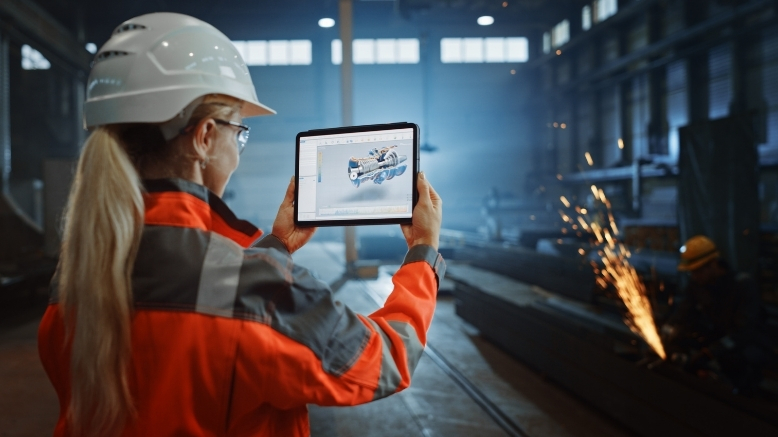— 6 min read
Top Construction Safety Training Trends to Watch in 2026


Last Updated Oct 27, 2025

Anthresia McWashington
Content Manager
20 articles
Anthresia McWashington is a Content Manager at Procore. She previously worked as an editor and reporter for Gulf Energy Information and Houston Media Group. She earned her BA in Communications and Journalism from the University of Houston. Anthresia loves track & field and practicing her French. She lives in Houston.

Kristen Frisa
Contributing Writer
111 articles
Kristen Frisa is a contributing writer for Procore. She also contributes to a variety of industry publications as a freelance writer focused on finance and construction technology. Kristen holds a Bachelor of Arts in Philosophy and History from Western University, with a post-graduate certificate in journalism from Sheridan College. She lives in Ontario, Canada.
Last Updated Oct 27, 2025

Construction safety training (CST) educates workers about the risks they face on construction sites and teaches them how to prevent accidents, injuries and fatalities.
The construction industry has the highest worker death rate of any industry and comes with many risks. However, thorough CST can help mitigate and prevent incidents.
In this article, we’ll cover the componants of safety training, emerging trends, plus helpful training resources.
Table of contents
5 Key Components of Construction Safety Training
While construction work-related deaths have been decreasing — for example, deaths were 11% lower in 2024 than in 2023 — more than 5,000 workers each year still die in largely preventable incidents.
A comprehensive safety training program should cover at least these five key components to ensure that workers are prepared for all types of hazards they may encounter on-site.
Hazard Identification
Workers must be trained to recognize common hazards such as falls, electrocution and machinery-related risks. Identifying potential dangers helps workers avoid accidents before they occur.
Safety Protocols
Training workers on properly using safety equipment — including personal protective equipment (PPE) like helmets and harnesses — and handling tools and machinery safely is essential for reducing risks.
Emergency Response
Emergency response training in CST prepares workers to handle emergencies effectively, whether it's through self-rescue techniques, administering first aid, evacuating the site or reporting incidents. Workers with self-rescue training have a 76% lower chance of fatal falls compared to those without.
Risk Mitigation Techniques
Thorough CST emphasizes preventive measures, such as using scaffolding correctly, employing proper lifting techniques and implementing fall protection strategies to avoid injuries.
Safety Leadership
Supervisors and managers should also undergo leadership training to help them effectively manage safety protocols. Construction safety officers, or Safety-Trained Supervisors Construction (STSC), can advocate for safe practices and guide their teams in maintaining a culture of safety.
Emerging Trends in Construction Safety Training
More Emphasis on Mental Health
Mental health challenges like anxiety or depression can impair workers’ judgment, leading to an increased risk of accidents.
According to The Center for Construction Research and Training (CPWR), 30.7% of construction workers reported feeling anxious at least once per month in 2021, a 41.5% increase from 2011. Addressing mental health in safety training helps workers make better decisions and reduces the likelihood of accidents.
Interactive Training
Virtual reality (VR) and augmented reality (AR) are transforming safety training by providing workers with immersive, hands-on experiences of real-life hazards in a controlled environment. This innovative approach can support both the understanding and retention of safety protocols, making training more effective.
In fact, in 2024, 34% of employees reported having engaged with location-tracking technologies at work, showcasing the growing adoption of advanced tools in safety practices.
Wearable Technology
In addition to smart helmets and vests, many construction companies are now integrating wearable tech like smartwatches and fitness trackers into their safety protocols. These devices monitor vital signs like heart rate, fatigue levels and physical activity, providing real-time data on workers' well-being.
In the case of emergencies, smartwatches can send distress signals and increase the likelihood of the wearer receiving help promptly.
Predictive Analytics
Predictive analytics tools analyze past incidents and real-time data to predict potential hazards before they occur. This technology allows construction companies to proactively address risks and prevent accidents.
Safety Apps
Mobile safety apps are gaining traction, giving workers easy access to safety checklists, incident reports and safety manuals directly from their smartphones. These apps provide a convenient way for workers to stay informed and make sure they are following the proper procedures.
4 Safety Training Trends to Watch in 2026
Besides the safety training trends emerging across the field in recent years, there are some specific trends to watch for 2026 that safety leaders should keep in mind.
1. Increased Drone Usage
Drones are being found useful for many tasks on construction sites, including in inspections and surveys, significantly reducing the need for human workers to enter potentially hazardous areas.
For instance, drones equipped with ultrasonic probes and high-quality cameras can tell the thickness and condition of materials like chimneys, assessing the safety of the area and improving cost savings, while actually getting images from more angles than a human could.
2. Focus on Sustainability
There is a growing emphasis on sustainable practices in construction, as the world comes to grips with the impacts of climate change. Construction accounts for 37% of global emissions, so reducing emissions is certainly one of the main focuses of the push for sustainability.
Sustainable construction impacts worker safety directly, by emphasizing the use of non-toxic, eco-friendly materials, thereby reducing exposure to hazardous substances. For example, using low-VOC (volatile organic compounds) paints and sealants minimizes harmful emissions on-site, improving air quality and reducing health risks.
Proper disposal of hazardous materials also prevents environmental contamination and protects worker health. Companies can look to a variety of construction standards to lead their sustainability efforts and strive to reduce the environmental impact of their coming projects.
3. Use of Regulation and Compliance Software
New software tools are being developed to help construction companies stay compliant with evolving regulations.
Using mobile apps, workers can access safety information on the spot, and report any causes for concern throughout the day. When leaders access this information via a central system, they can analyze and act on them before incidences occur.
These tools enhance data management and streamline compliance processes, reducing the risk of non-compliance and associated penalties.
4. Next-Level Onsite Automation
As technology improves, there are more and more tasks on construction projects that become suitable for automation, right from repetitive administrative tasks to heavy bricklaying jobs.
Technologies such as AI-powered drones and robots are handling tasks that are dangerous or repetitive for human workers. This shift improves safety as well as productivity and accuracy.
Where to Start: Resources for Construction Safety Training
Many resources are available to help get started with construction safety training, from official certifications to private organizations. These include:
OSHA Training Resources
OSHA offers a variety of training courses, including the OSHA 10 and 30 certifications, through approved trainers and online platforms.
Center for Construction Research and Training
The Center for Construction Research and Training (CPWR) provides valuable resources for improving safety and health in the construction industry, including training materials, data on workplace fatalities and mental health initiatives.
Third-party Organizations
Private organizations like Procore offer comprehensive quality and safety tools such as specialized software, apps and trainings.
For a more comprehensive list, check out the top 12 safety organizations for the construction industry.
Go beyond OSHA regulations.
The Procore Safety Qualified program provides construction professionals with everything they need to know to create a culture of safety.

Construction Safety Training: A Commitment to Workers
Better construction safety training helps prevent injuries and boost compliance on construction sites. Although it's already improving, safety training will likely continue to improve with insights from wearable technology, AR, VR and a higher focus on workers’ mental health.
As OSHA Assistant Secretary Douglas Parker said: “Reducing worker deaths means embracing an approach that makes worker health and safety a core value in every workplace.” By prioritizing safety at all levels, companies can protect their workforce.
Was this article helpful?
Thank you for your submission.
0%
0%
You voted that this article was . Was this a mistake? If so, change your vote
Scroll less, learn more about construction.
Subscribe to The Blueprint, Procore’s construction newsletter, to get content from industry experts delivered straight to your inbox.
By clicking this button, you agree to our Privacy Notice and Terms of Service.
Thank you!
You’re signed up to receive The Blueprint newsletter from Procore. You can unsubscribe at any time.
Categories:
Written by

Anthresia McWashington
Content Manager | Procore
20 articles
Anthresia McWashington is a Content Manager at Procore. She previously worked as an editor and reporter for Gulf Energy Information and Houston Media Group. She earned her BA in Communications and Journalism from the University of Houston. Anthresia loves track & field and practicing her French. She lives in Houston.
View profile
Kristen Frisa
Contributing Writer | Procore
111 articles
Kristen Frisa is a contributing writer for Procore. She also contributes to a variety of industry publications as a freelance writer focused on finance and construction technology. Kristen holds a Bachelor of Arts in Philosophy and History from Western University, with a post-graduate certificate in journalism from Sheridan College. She lives in Ontario, Canada.
View profileExplore more helpful resources

Why Don’t We Protect the Whole Person?
Behind every safety incident is a person — and behind that person is a story we rarely ask about. Were they already exhausted before they arrived on site? Did they...

What Drives Better Safety Outcomes—Carrot, Stick, or “Zero Harm”?
On paper, construction has never looked safer. In reality, mental health claims are rising, workers are disengaged and the compliance playbook is broken. Garry Mansfield, co-founder of Scratchie, argues the...

How Close Are We to Bridging the Design-Build Divide?
For decades, construction decisions have often been made based on gut instinct. But what if the real barrier to transformation isn’t technology—it’s the divide between design and construction? In episode...

Gain Without Pain: Leveraging Technology for Strategic Safety Programs
In safety, there is always room for improvement, and technology creates the ability to scale safety programs that drive risk mitigation, operational efficiencies and competitive advantage. In fact, builders who...
Free Tools
Calculators
Use our calculators to estimate the cost of construction materials for your next project.
Templates
Find a template to help you with your construction project tasks.
Material Price Tracker
Get the latest U.S. retail prices and view historical trends for common building materials.
Glossary
Explore key terms and phrases used in the industry.
